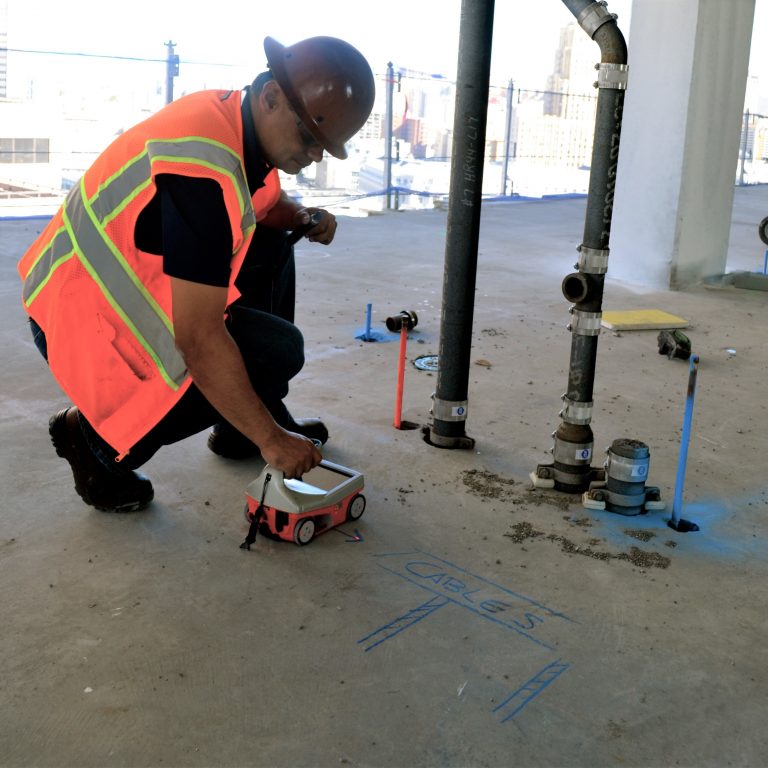Specialist Tips for Ideal Concrete Scanning Outcomes
Specialist Tips for Ideal Concrete Scanning Outcomes
Blog Article
Beyond the Surface Area: Leveraging Advanced Concrete Scanning Techniques for Unmatched Precision and Understanding
Advanced concrete scanning strategies have arised as important tools in this search, offering a glance under the surface area to reveal a globe of important understandings. By using sophisticated innovations, experts can discover abnormalities, assess the condition of concrete frameworks, and make educated choices that shape the program of projects.
Relevance of Advanced Concrete Scanning
The importance of making use of innovative concrete scanning techniques exists in the unrivaled accuracy they use for finding sub-surface anomalies and ensuring architectural integrity. By utilizing advanced technologies such as ground-penetrating radar (GPR), electro-magnetic induction, and progressed sonar imaging, building and construction experts can dive below the surface of concrete frameworks with a degree of accuracy that far goes beyond typical evaluation techniques. Concrete Scanning. These methods make it possible for the recognition of covert threats like rebar deterioration, voids, channels, or post-tension cords that can jeopardize the security and safety and security of a framework over time
Furthermore, progressed concrete scanning provides indispensable insights right into the total problem of a concrete element without the need for invasive steps, lessening the danger of causing damage throughout the evaluation process. The capability to pinpoint the precise location and depth of potential concerns enables targeted fixings and maintenance, inevitably lengthening the life expectancy of the structure and enhancing its performance. In essence, the significance of innovative concrete scanning can not be overstated in the world of building and framework upkeep, where accuracy and integrity are critical.
Types of Cutting-Edge Technologies

Abnormalities and Problem Detection

Along with GPR, concrete scanning techniques like thermography and impact-echo testing are additionally efficient in detecting abnormalities and defects. Thermography makes use of infrared modern technology to recognize variations in surface temperature level, showing possible locations of problem such as delamination or moisture access. On the other hand, impact-echo testing entails assessing acoustic responses to identify voids, splits, and various other problems within the concrete. By leveraging these sophisticated techniques, professionals can proactively resolve architectural problems, ensuring the longevity and safety of concrete frameworks.
Assessing Concrete Problem
How can designers accurately evaluate the condition of concrete frameworks to guarantee their durability and safety? Evaluating the concrete condition is a critical aspect of preserving facilities honesty. Numerous innovative concrete scanning techniques are utilized for this function. Ground-penetrating radar (GPR) is commonly used to assess the interior structure of concrete, identifying spaces, cracks, and other abnormalities that may compromise its strength. In addition, impact-echo testing can offer understandings right into the density and honesty of concrete components. Ultrasonic pulse rate screening is one more useful approach for reviewing concrete quality by gauging the speed of sound waves try this website via the material.
In addition, visual assessment continues to be a basic part of concrete condition analysis. Designers visually analyze the surface area for indicators of damage, such as spalling, breaking, or discoloration. Combining non-destructive testing approaches with visual evaluations permits a thorough analysis of concrete problem, allowing designers to recognize potential problems beforehand and apply timely upkeep or repair work. By leveraging these sophisticated techniques, designers can make certain the long-lasting longevity and safety of concrete frameworks.
Enhancing Decision-Making Procedures
In the world of framework management, maximizing decision-making processes is crucial for guaranteeing the effective upkeep and longevity of concrete frameworks. Enhanced decision-making procedures in concrete management entail utilizing innovative scanning methods to gather in-depth information on the condition of frameworks. By leveraging innovations such as ground-penetrating radar and 3D imaging, stakeholders can make enlightened decisions relating to repair service, substitute, or reinforcement approaches.
These progressed scanning strategies provide indispensable insights into the internal structure of concrete, determining prospective concerns such as spaces, fractures, or corrosion that may not be noticeable externally. This degree of detailed info enables for positive upkeep preparation, read the article minimizing the risk of architectural failings and increasing the overall life expectancy of concrete frameworks.
Furthermore, by integrating electronic documentation and analysis devices right into the decision-making process, stakeholders can track the development of concrete problems over time, enabling predictive maintenance methods and enhancing resource allotment. Eventually, the integration of innovative concrete scanning techniques improves decision-making processes by offering unparalleled accuracy, understanding, and effectiveness in facilities management.
Conclusion
In final thought, advanced concrete scanning methods offer exceptional precision and insight in detecting abnormalities, defects, and examining the condition of concrete frameworks. By leveraging advanced innovations, decision-making procedures can be improved, bring about even more efficient and informed services for preserving and fixing concrete facilities. These techniques play an essential role in making sure the safety and security and long life of concrete structures, making them an essential tool in the area of building and design.
Additionally, progressed concrete scanning supplies indispensable insights right into the general problem of a concrete aspect without the demand for intrusive steps, minimizing the threat of creating damage throughout the analysis process - Concrete Scanning. One more cutting-edge innovation is 3D X-ray scanning, which gives comprehensive photos of the inner structure of concrete, providing beneficial information without the demand for devastating testing. Furthermore, Concrete Cover Meters are made use of to measure the thickness of concrete cover over reinforcement bars properly. Enhanced decision-making procedures in click concrete administration include making use of innovative scanning strategies to gather in-depth data on the condition of structures.In final thought, progressed concrete scanning techniques provide exceptional accuracy and understanding in spotting abnormalities, flaws, and examining the problem of concrete structures
Report this page